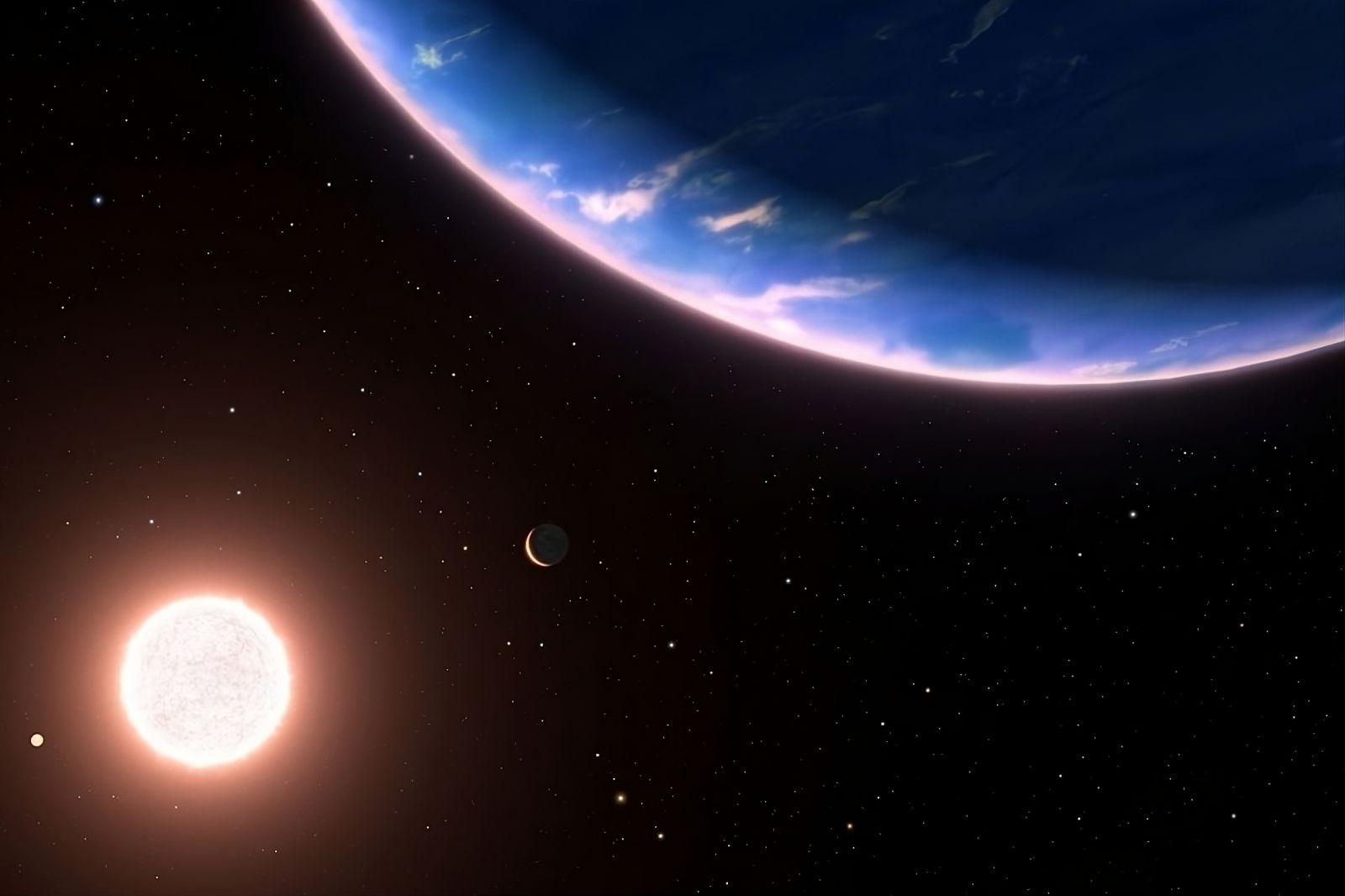Follow us on Google News (click on ☆)

Astronomers have shown that the planet's atmosphere contains a high concentration of heavier molecules, including a substantial accumulation of water vapor.
Credit: NASA, ESA, Leah Hustak (STScI), Ralf Crawford (STScI)
Astronomers have shown that the planet's atmosphere contains a high concentration of heavier molecules, including a substantial accumulation of water vapor, leading them to suggest that it could very well be a "steam world."
Published in The Astrophysical Journal Letters, the study was led by Caroline Piaulet-Ghorayeb, a PhD candidate at the Trottier Institute for Research on Exoplanets (iREx) at the University of Montreal, in collaboration with researchers from several countries.
Earlier this year, thanks to data from the Hubble Space Telescope (HST), the iREx team announced the detection of water in the atmosphere of the exoplanet GJ 9827 d, making it—due to its size, about twice that of Earth—the smallest exoplanet whose atmosphere has been confirmed.
These significant discoveries pave new paths for the search for life beyond the solar system and enhance our understanding of how planets form and what they are composed of.
A previously elusive goal
For years, scientists have focused their efforts on detecting atmospheres around gas giants and mini-Neptunes (planets significantly larger than Earth whose atmospheres are dominated by hydrogen, like Jupiter and Neptune in the solar system).
However, detecting atmospheres around smaller planets, closer in size to Earth, has so far remained an elusive goal.
"So far, every planet we've detected with an atmosphere has been either a gas giant or, at best, a mini-Neptune," says Caroline Piaulet-Ghorayeb, lead author of the study. "These planets have atmospheres primarily composed of hydrogen, making them more similar to the gas giants in our solar system than to rocky planets like Earth, whose atmospheres are dominated by heavier elements."
Rich in heavier molecules
What makes exoplanet GJ 9827 d unique is the composition of its atmosphere.
By combining data from the James Webb and Hubble telescopes, Caroline Piaulet-Ghorayeb shows that, unlike the hydrogen-dominated atmospheres of larger planets, GJ 9827 d's atmosphere has a high concentration of heavier molecules and significant amounts of water vapor.
This discovery marks the first solid detection of an exoplanetary atmosphere where hydrogen is not the primary component, pointing instead to a heavier, water-laden atmosphere.
"The molecular weight of this atmosphere is closer to the carbon dioxide- or nitrogen-rich atmospheres we are currently seeking on small rocky planets, where we might one day search for life," adds Caroline Piaulet-Ghorayeb.
These observations were made with the Canadian instrument on the JWST, the Near-InfraRed Imager and Slitless Spectrograph (NIRISS). Using transmission spectroscopy, the research team analyzed the starlight passing through the planet's atmosphere as it crossed in front of its host star, GJ 9827.
The team then combined the new JWST findings with previous HST observations to show definitively that the spectral features they analyzed stem from the planet's atmosphere, not contamination from the star in the system.
With the data from NIRISS in SOSS mode, astronomers can now distinguish between two types of atmospheres for the planet: one that is cloudy and contains few heavy elements, dominated by hydrogen with a few traces of water; the other is very dense, carrying many heavy elements, much of which is water.
Since exoplanet GJ 9827 d is close to its star, its atmosphere is likely a dense, overheated gas mixture, rather than being composed of distinct layers or clouds.
Probably not habitable
While GJ 9827 d is not believed to be habitable due to its proximity to its host star and the resulting high surface temperatures (about 662°F [350°C]), this discovery is a step forward in the search for habitable environments.
The presence of a heavy, water-rich atmosphere on a small planet like GJ 9827 d proves that such atmospheres exist and can be studied with the precision of the JWST. This makes it more plausible that we might find habitable, Earth-like planets.
"This is a significant step towards detecting atmospheres around small, Earth-like planets," says Caroline Piaulet-Ghorayeb. "GJ 9827 d is the first planet where we've detected an atmosphere rich in heavy molecules, just like the terrestrial planets in our solar system, and the first confirmed example of a 'steam world,' as theorized by the scientific community years ago."
It is believed that these "steam worlds" have thick, water-laden atmospheres, without surface ice or liquid water, and maintain a steam atmosphere due to their proximity to their host stars. They resemble the icy moons Europa and Ganymede, but are close enough to their stars for water to appear as vapor in the atmosphere rather than as an icy surface layer.
Astronomers hope that further observations of exoplanet GJ 9827 d using the JWST, planned for the coming months, will provide more information on the composition of its steam atmosphere.